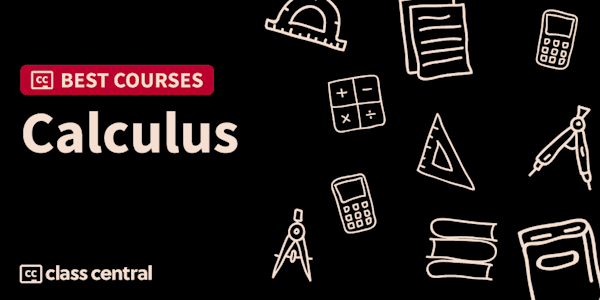Overview
Syllabus
Maximum & Minimum.
Turning Points.
Stationary Points.
Non-Stationary Turning Points (1 of 2).
Non-Stationary Turning Points (2 of 2).
Introduction to Points of Inflexion.
The Special Case of x^4.
Horizontal Points of Inflexion.
Overview of Critical Points (1 of 2).
Overview of Critical Points (2 of 2).
Overview of Critical Points: Examples (1 of 2).
Overview of Critical Points: Examples (2 of 2).
Finding and Confirming Turning Points.
Curve Sketching: Locating Stationary Points.
Curve Sketching: Determining Nature of SPs.
Curve Sketching: Drawing the Graph.
Sign of the First Derivative.
Second Derivative: A Physical Analogy.
Second Derivative: Concavity.
Second Derivative: Notation.
Second Derivative: Relationship w/ First Derivative.
Graphing w/ the First Derivative.
Graphing w/ the Second Derivative.
Choosing First or Second Derivative.
Graph Behaviour Chart.
Implicit Differentiation.
Implicit Differentiation - example question.
Visual Approach to Derivatives (1 of 2).
Visual Approach to Derivatives (2 of 2).
Y11 Mathematics Ext 1 Quiz (1 of 2: Curve sketching with calculus).
Introduction to Solids of Revolution.
Verifying Formulae for Cylinder, Cone & Sphere.
Compound Volumes (1 of 2).
Compound Volumes (2 of 2).
Volumes: Examples around x-axis & y-axis.
Subtraction of Volumes.
Subtraction of Volumes: Class Discussion.
Volume within a Cone (1 of 3: Separating variables and constants for differentiation).
Volume within a Cone (2 of 3: Finding Volume in terms of a single variable to differentiate).
Volume within a Cone (3 of 3: Finding the Stationary Points to determine the maximum volume).
Solids of Revolution (1 of 3: What happens when you rotate an area around an axis?).
Solid of Revolution (2 of 3: Finding Volume of the Solid of Revolution using Volume of a cylinder).
Solids of Revolution (3 of 3: Finding the Volume of an area rotated around the y axis).
Conical Volume (1 of 2: Derivation of the Volume of a Cone through Solids of Revolution).
Spherical Volume (2 of 2: Derivation of the Volume of a Sphere through Solids of Revolution).
Difference between Volumes (1 of 2: Method to finding the difference between volumes).
Difference Between Volumes (2 of 2: Investigating the relationship between Parabolas & Cylinders).
Intro to Solids of Revolution (1 of 3: Establishing the formula).
Intro to Solids of Revolution (2 of 3: Simple worked example).
Intro to Solids of Revolution (3 of 3: Other axes, volume of a sphere).
Solids of Revolution - Subtracting Volumes.
Non-Standard Integrals: "Differentiate, hence integrate" (1 of 2).
Non-Standard Integrals: "Differentiate, hence integrate" (2 of 2).
Areas Under Curves: Logarithmic Functions.
Integration & Logarithmic Functions: Log Integrands (1 of 2).
Integration & Logarithmic Functions: Log Integrands (2 of 2).
Integration & Logarithmic Functions: Non-Log Integrands (1 of 3).
Integration & Logarithmic Functions: Non-Log Integrands (2 of 3).
Integration & Logarithmic Functions: Non-Log Integrands (3 of 3).
Areas Under Curves: Logarithmic Functions (Alternative Approach).
Applications & Implications of d/dx(½v²): Concrete Example.
Motion Exam Question (1 of 2: Finding v(x) from a(x)).
Motion Exam Question (2 of 2: Finding x(t) from v(x)).
Differentiating x^x (3 of 3: Implicit Differentiation).
Implicit Differentiation (Differentiating a function without needing to rearrange for x or y).
Rates of Change (1 of 4: Finding the Volume of an unknown height of water with a diagram).
Maximum/Minimum with Quadratics (1 of 2: Axis of symmetry).
Maximum/Minimum with Quadratics (2 of 2: Completing the square).
Max/Min Question: Cutting a Wire in Two (1 of 2: Setting up the equations).
Max/Min Question: Cutting a Wire in Two (2 of 2: Finding the minimum).
Challenging Max/Min Exam Question.
Graphing Logarithmic Function with Calculus (1 of 2: Identifying features).
Graphing Logarithmic Function with Calculus (2 of 2: Constructing the sketch).
Differential Equation in terms of Dependent Variable (1 of 2: Partial Fractions).
Differential Equation in terms of Dependent Variable (2 of 2: Integration).
Taught by
Eddie Woo

